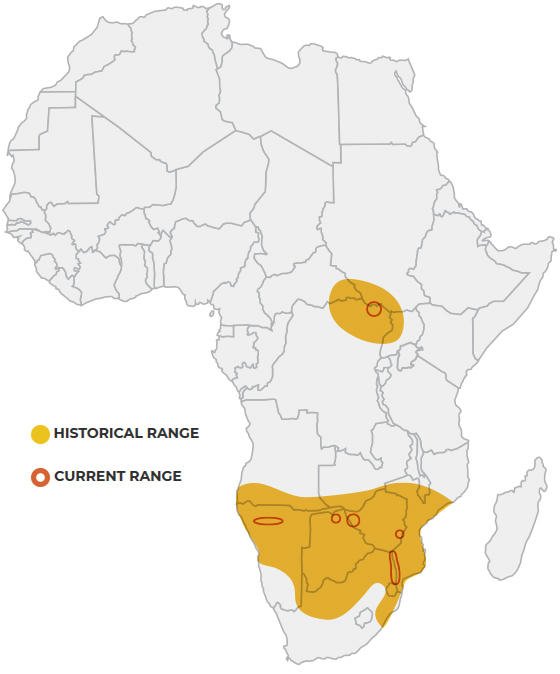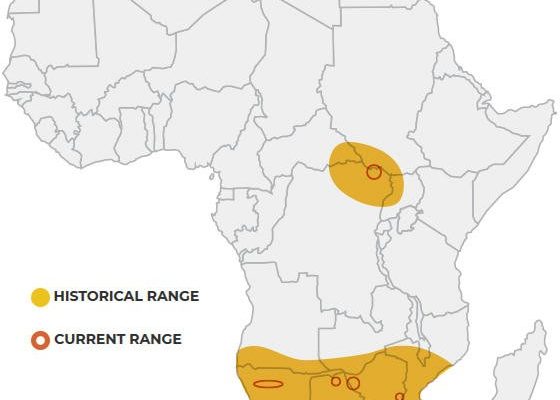
White rhinos thrive in specific environments that provide the right food and space for their needs. They don’t just wander anywhere; they have favorite spots. In this article, I’ll take you through the various habitats of white rhinos and explain how their distribution has changed over the years. You’ll see why their living conditions are so important for their survival and what we can do to ensure they stay protected.
Natural Habitat of White Rhinoceroses
White rhinos prefer open grasslands and savannas. Think of wide, rolling fields dotted with bushes and trees. These areas offer plenty of grass, their favorite food, which is essential for their diet. Since they’re large animals, they need a lot of space to graze and roam. Their bulky bodies and strong legs are built for walking long distances in search of food.
In addition to grasslands, white rhinos are often found in wooded savannas where they can shelter from the sun and find water sources. They love to wallow in mud, too, which helps keep their skin cool and protects them from sunburn and insects. You might say they have a pretty good life if they can bask in the sun and enjoy a mud spa!
Two Subspecies of White Rhinos
There are two main subspecies of white rhinoceroses: the Southern white rhinoceros and the critically endangered Northern white rhinoceros. The Southern white rhino is the most numerous, with a population thriving primarily in southern Africa, particularly in countries like South Africa, Namibia, Zimbabwe, and Botswana.
On the other hand, the Northern white rhino has faced a dramatic decline in numbers due to poaching and habitat loss. Today, there are only two known living individuals, both of which are females residing in a conservancy in Kenya. This stark difference in numbers showcases how habitat availability and protection efforts can determine the fate of a species.
Geographical Distribution of White Rhinos
Originally, white rhinos roamed across eastern and southern Africa. However, human activities have drastically changed their geographical distribution. As communities expanded and agriculture took over, many white rhinos lost their homes. Nowadays, their habitats have become more confined, which impacts their populations.
Today, the largest number of white rhinos can be found in protected areas like national parks and reserves. Countries like South Africa have made great strides in conservation, ensuring that there are safe spaces for these animals. The Kruger National Park is one of the best examples, being home to a significant portion of the Southern white rhino population.
Conservation Areas and Their Importance
Protected areas are crucial for the survival of white rhinoceroses. Conservation efforts have focused on creating safe habitats where these animals can thrive without fear of poaching. These areas not only protect the rhinos but also support a diverse range of wildlife.
Many reserves implement anti-poaching measures, such as employing rangers to monitor activities and ensure the safety of these magnificent creatures. By safeguarding their habitat, these organizations are giving white rhinos a fighting chance.
Habitat Threats and Challenges
Unfortunately, white rhinos face numerous threats in their habitats. One of the biggest challenges is habitat destruction. As land is cleared for agriculture and urban development, natural spaces shrink. This not only limits the available area for the rhinos but also fragments their populations, making it harder for them to find mates.
Another significant threat is poaching. Rhinos are hunted for their horns, which are highly valued in illegal markets. Despite numerous efforts to combat this trade, poaching continues to pose a serious risk. The combination of habitat loss and poaching makes it tough for white rhinoceroses to survive in today’s world.
Importance of Sustainable Practices
To help protect white rhinoceroses and their habitats, sustainable practices are key. Communities can work together to create buffer zones around protected areas, which not only benefit wildlife but also provide resources for local populations.
By promoting ecotourism, some regions encourage visitors to learn about and support conservation efforts. This approach allows people to connect with nature while generating income that can be reinvested into protecting habitats and animals. It’s a win-win situation that highlights the importance of keeping our ecosystems healthy.
How You Can Help
You might be wondering how you can contribute to the conservation of white rhinos, even from a distance. Supporting reputable wildlife organizations that focus on rhino conservation can make a difference. Donations can help fund anti-poaching efforts, habitat restoration projects, and educational programs.
Additionally, spreading awareness about the challenges white rhinos face can encourage more people to get involved in conservation efforts. Every little bit counts, and collective action can drive significant change.
Future of White Rhinoceroses
The future of white rhinoceroses depends on our actions today. Conservationists are making great strides in protecting these incredible animals and their habitats, but it requires ongoing commitment. By implementing effective conservation strategies and working with local communities, we can help ensure that white rhinos continue to roam the African plains for generations to come.
Ultimately, understanding where white rhinoceroses live and the challenges they face is crucial for their survival. They are not just creatures of beauty but essential players in maintaining the ecosystems they inhabit. Through awareness and action, we can help preserve their rightful place in the wild.
In conclusion, the white rhinoceros teaches us about the intricate connection between animals and their environments. Let’s do our part to protect these magnificent giants and ensure they thrive in their natural habitats.

